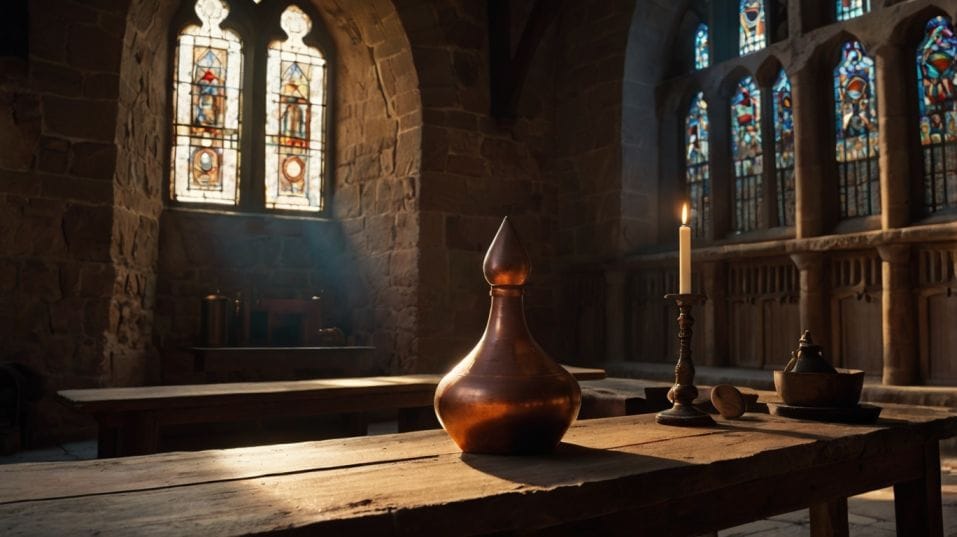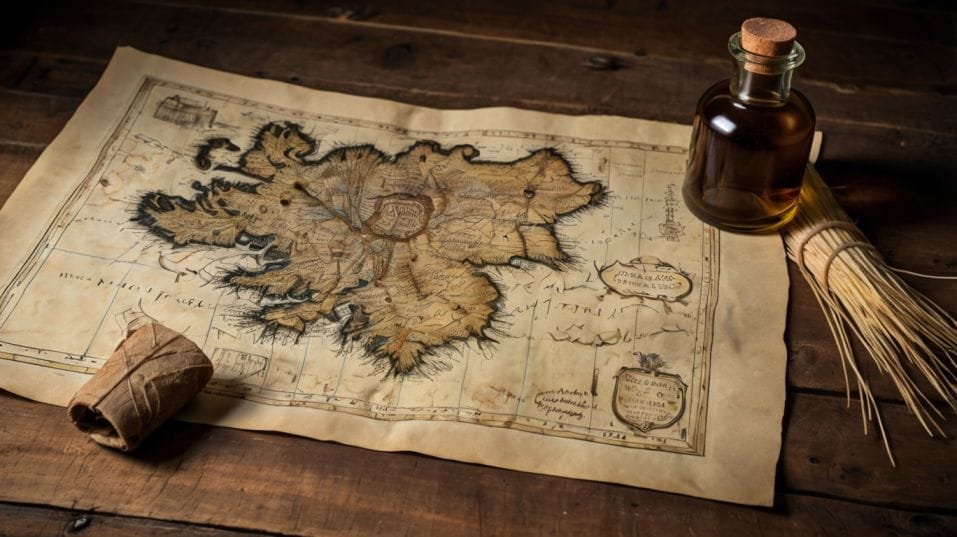The Real Origin of the Word “Whiskey”
Discover the deep meaning behind the word “whiskey” and how it can elevate your tasting, collecting, and appreciation of every pour.

Ever wonder what the word whiskey actually means—and why it matters to your next pour? If you’re just starting to take whiskey seriously, there’s more to learn than bottle labels and tasting notes.
Real appreciation begins with a single word that predates modern brands by centuries. Before you nose a glass or chase a limited release, you need to understand where it all started.
Not with flavor—but with purpose. Because the name holds the key to everything that came after.
From Monasteries to Mouths: The Word That Breathed Life
The word whiskey comes from the Old Irish phrase “uisge beatha”—literally water of life. Say it out loud: ish-ka ba-ha. Over time, the phrase shortened to usky, then whisky, and finally, whiskey with an “e” in Ireland and the U.S.
But this wasn’t just poetic flair. The phrase aqua vitae—the Latin version—was already being used by monks across Europe as early as the 12th century to describe distilled alcohol, seen as a medicinal gift, not a recreational drink.
Distillation wasn’t about flavor—it was about extracting something pure and vital. Something powerful. Something that could preserve, heal, or awaken.
Ireland and Scotland adopted the concept, but they didn’t just copy it. They gave it soul. Monks brought distillation knowledge to these regions, often using rudimentary copper stills to create their own local versions.
They used barley because it grew well. They shared it with farmers, clans, and communities. This wasn’t sterile chemistry—it was living tradition.
What you’re sipping today? That’s a descendant of uisge beatha. Every drop still carries that name’s weight—if you’re paying attention.

What the Word Still Teaches You About Flavor
There’s a reason this origin matters now. When you hear “water of life,” you should be tasting more than alcohol. You should be tasting intent.
Whiskey, at its core, isn’t about smoothness or trendiness or how limited the release is. It’s about capturing the essence of a place, a crop, a season, a decision.
That mindset—distilling life down to its essence—is what separates a memorable bottle from a forgettable one.
So when you pour a whiskey, ask yourself: does this taste alive? Does it evolve in the glass? Does it challenge you, even a little?
Real whiskey isn’t always easy, but it’s rarely boring. The best ones don’t just go down—they linger, talk back, and pull you in. That’s what the name tells you to look for.
Ireland, Scotland, and the “E”
You’ll see both spellings: whisky and whiskey. It’s not random.
Whisky (no “e”)
Used in Scotland, Canada, Japan, and most of the rest of the world.
Whiskey (with “e”)
Primarily Ireland and the United States. Why the split? There are several theories.
One is that 19th-century Irish distillers wanted to distinguish their product from Scottish whisky, which they considered of lower quality at the time. Another is simple spelling evolution—an “e” added to reflect Irish Gaelic.
But the difference isn't just cosmetic. It reflects regional pride, technique, and identity. Scottish whisky leans on malted barley and pot stills.
Irish whiskey often combines malted and unmalted barley in large pot stills, creating a creamier profile. Each spelling represents a philosophy.
When you understand that, you stop asking which is better—and start asking what each is trying to say.
Technique Is History You Can Taste
In the beginning, there were no barrels. No age statements. No marketing terms like “small batch” or “craft.” Whiskey was raw and unfiltered, often consumed fresh off the still. It was pungent, oily, and wildly inconsistent. But it was real.
As techniques evolved—intentional aging, copper pot still design, blending strategies—whiskey became less medicinal and more experiential. But every tradition had a reason behind it:
- Irish pot stills grew larger in part due to tax structures that penalized distillers per still, not per volume.
- Peated Scotch developed from using peat fires to dry barley in places where coal or wood was scarce.
- American bourbon emerged from frontier ingenuity—corn as the dominant grain, charred oak barrels as a storage necessity that turned out to be a flavor revelation.
So when you taste a whiskey, don’t just clock the notes. Consider the method. Ask why it tastes the way it does. The “how” always leads to a more interesting “why.”
What Collectors and Drinkers Often Miss
A lot of newer whiskey drinkers get distracted chasing rare bottles, high proof monsters, or celebrity-endorsed brands. But those things are surface-level. They might be fun, but they don’t make your palate better—or your experience deeper.
Instead, focus on origin, both geographical and philosophical. Is the distillery rooted in tradition? Are they doing something distinct, or just repackaging what someone else already mastered?
Collecting whiskey isn’t about hoarding trophies. It’s about building a library of flavor and story—something that reflects curiosity, not clout.
And drinking whiskey isn’t about polishing your bar cart or chasing buzzwords. It’s about building instinct.
About knowing when a whiskey feels alive versus when it just feels designed. The name “whiskey” reminds you of that. It’s not a marketing term. It’s a compass.
Final Thoughts
Whiskey means “water of life”—but it also means distilling the essential. That idea isn’t stuck in history. It’s the best lens you’ve got for tasting, collecting, and understanding whiskey today.
So the next time you pour a glass, ask more than what does this taste like? Ask: what does this represent? Why was it made this way? What choices shaped it? That’s how you go from casual sipper to confident explorer.
Start with the story. Follow the flavor. Pour something today that helps you taste more than just the alcohol. Taste the life inside it.




